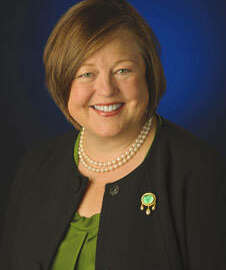
What’s missing in the new SES executive order
Leaders within the federal manager community offered a mixed bag of reactions to President Obama's new executive order on Service Executive Service reform. Higher...
Though few will argue against higher performance award caps and better pay distinctions for the Senior Executive Service, President Barack Obama’s new executive order on SES reform leaves more questions than answers, some members in the federal manager community say.
Reinstating performance bonus caps from 2010 levels — 4.8 to 7.5 percent — earned applause from the Senior Executives Association, which said it recommended the White House include a specific provision on awards in the final version of the executive order.
“That was our most key and emphasized recommendation, and we are pleased that the cap has been increased,” SEA President Tim Dirks told Federal News Radio.
But some in the federal management community said the order does little to address a much-needed culture change within the SES; and it provides few opportunities to empower current managers to lead such changes.
“These folks are underpaid; there’s no question about that, and addressing that is important,” said Bob Tobias, director of business development at American University’s Key Executive Leadership program. “But it doesn’t go to the fundamental reason why employees are not engaged and what the solution might be to increase organizational results. Paying people more will not necessarily lead to better organizational results. More satisfaction in the short term: maybe.”
Little or no mention of engagement was a major sticking point for some in the federal manager community.
The order requires that SES members complete one professional activity a year, in addition to a full leadership evaluation once every three years.
But Tobias said it’s a lack of professional development opportunities that pushes leadership satisfaction results — which have remained relatively low over the past five years — down.
“If I’m a doctor, a lawyer, an accountant, I have to have regular leadership development opportunities. Not so in the federal government,” Tobias said. “It’s really important for people in those positions to be regularly challenged, to continue to learn and to continue to develop themselves. That’s missing.”
John Salamone, vice president of Federal Management Partners and former executive director of the Chief Human Capital Officers Council, said engagement was also the one piece he was surprised the order didn’t address.
He also acknowledged that better pay and higher bonuses were important, but he wondered how they might impact GS-9s or 11s.
“Are there unintended consequences where the executives are getting bump ups? What impact if any will that have on the morale of the workforce?” he asked. “[It’s] great that the administration is taking these issues on. I do think they might be laying the groundwork for future reform.”
Questions about future implementation, small agencies
The timeline for implementing the SES order is another concern. The President signed off on the executive order with nearly one year left in his administration.
“We’re in a very challenging part of the administration’s term in the final year,” Dirks said. “It is particularly difficult to implement policy changes during the last year of an administration, including policies that are human resources policies. We are hopeful that agencies can move forward with the positive, important aspects of the reform, but the proof is in the pudding.”
Dirks said he was pleased to see that the Chief Human Capital Officers Council would collaborate with a new subcommittee under the President’s Management Council, which would advise the Office of Management and Budget, and Office of Personnel Management, on how well agencies are implementing the order.
But for Salamone, mere mention of collaboration with the CHCO Council isn’t enough. When a new administration comes on board in 2016, leadership on the subcommittee will likely change, he said. The CHCO Council, however, typically has a balance of career and politically appointed executives, which would hold some continuity during a presidential transition.
“I was disappointed that there wasn’t more of a role for the chief human capital officers and the Chief Human Capital Officers Council in the executive order,” he said. “If … you’re familiar with the PMC, there’s going to be a change in the administration, and I’m certain that those members of the PMC are going to turn over. Collaboration in this administration may look very different in the next administration.”
Salamone also questioned OMB’s phased implementation of four programs related to talent and succession, onboarding and hiring. Seven of the 24 Chief Financial Officers Act agencies will implement these initiatives in fiscal 2016. Seven more will follow in 2017, with the rest in 2018.
“I’m not certain why they want to stagger that, other than leveraging lessons learned,” he said. “But those are things that agencies can, and already should, be doing. It’s great to put something like that in the executive order to force agencies to do this, but those are good business practices and good management practices that they should already be doing.”
Though the order explicitly mentions a plan for most major cabinet-level agencies, it lacks guidance on phased implementation for other smaller agencies.
“If I’m a small agency HR director, or HR executive, or a non-CFO Act agency, I’m probably looking at the executive order wondering if this applies to me or not and what benefit I’m going to get from this,” Salamone said.
A request for comment to the Office of Management and Budget about small agencies’ role in the executive order was not immediately returned.
Copyright © 2025 Federal News Network. All rights reserved. This website is not intended for users located within the European Economic Area.
Nicole Ogrysko is a reporter for Federal News Network focusing on the federal workforce and federal pay and benefits.
Follow @nogryskoWFED





